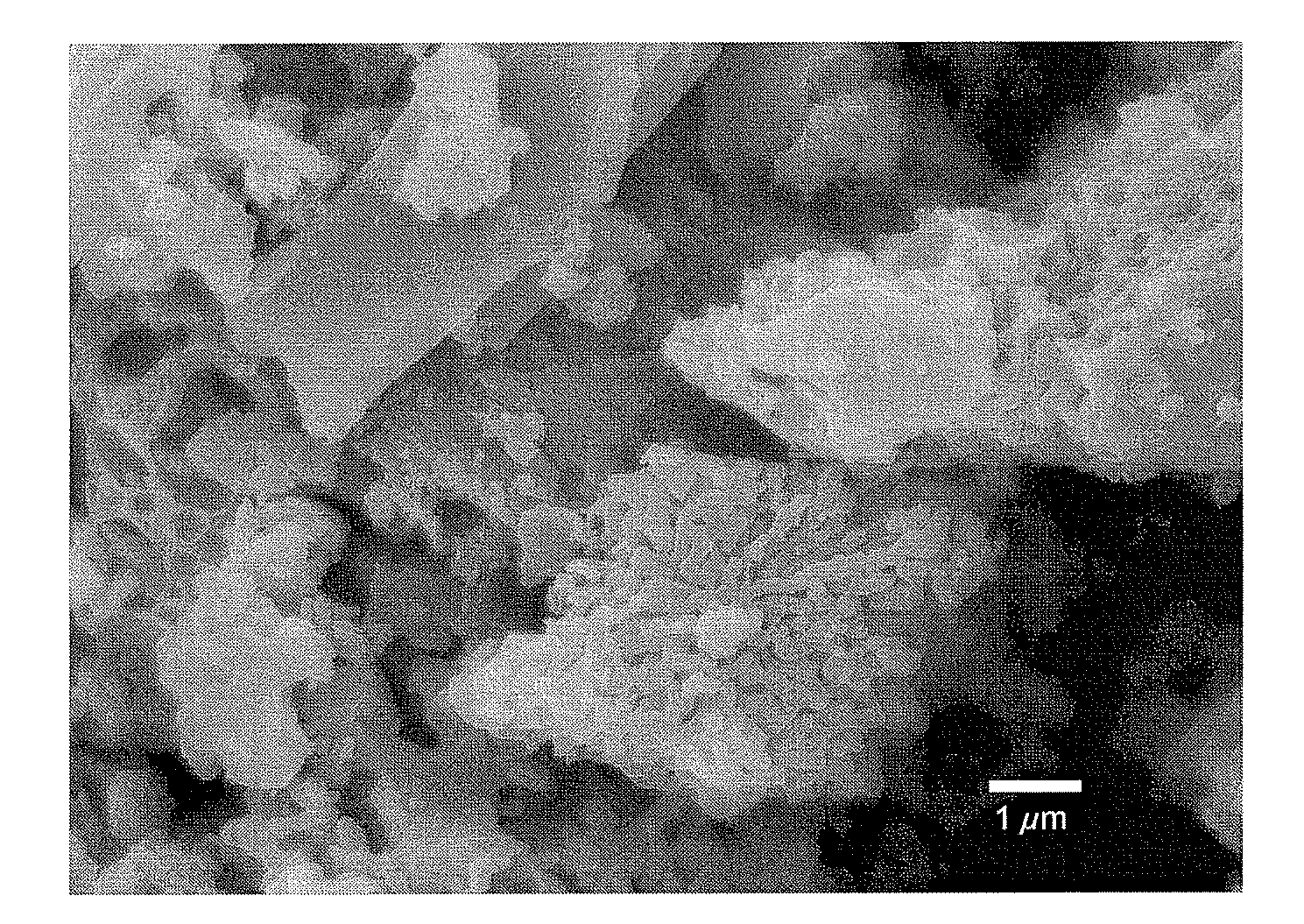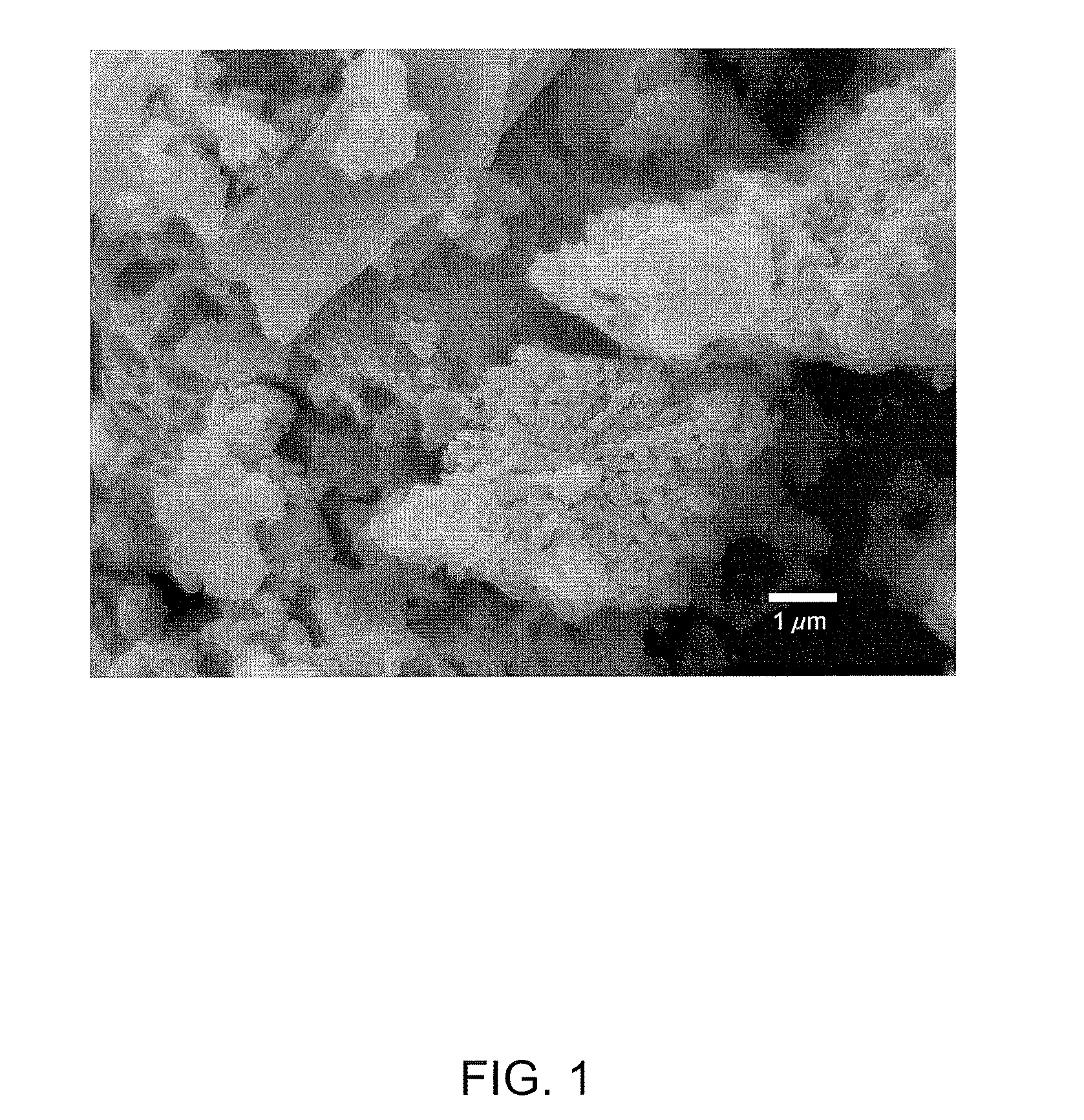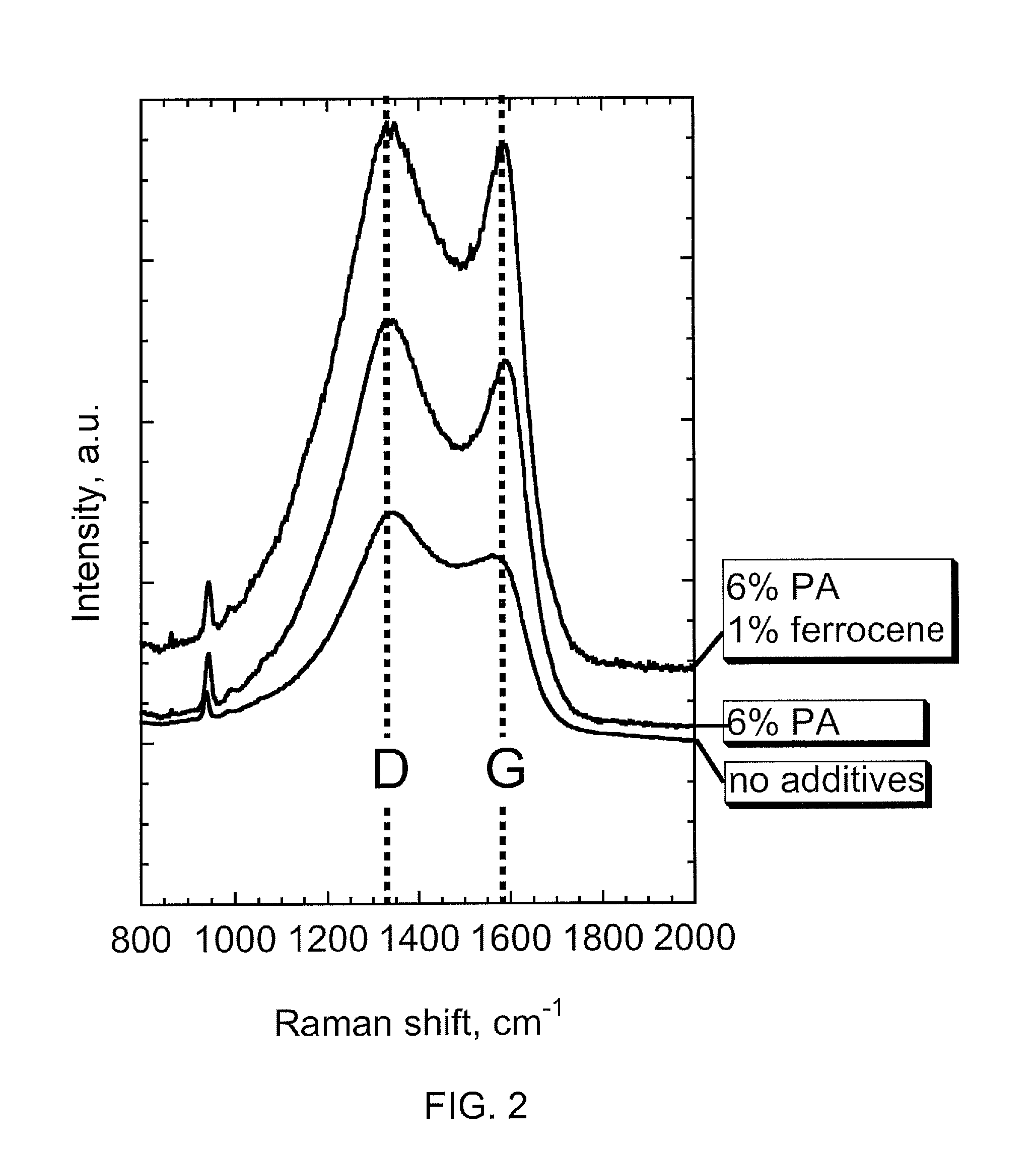Optimization of carbon coatings
- Summary
- Abstract
- Description
- Claims
- Application Information
AI Technical Summary
Benefits of technology
Problems solved by technology
Method used
Image
Examples
Embodiment Construction
[0019]The low temperatures (typically ˜600-750° C.) used in the preparation of LiFePO4 have presented a challenge for the co-production of well-ordered, graphitic carbon in-situ. Nevertheless, as will be disclosed herein, it is possible to manipulate the synthesis conditions to produce carbons with desirable characteristics. In particular, the judicious selection of carbon sources and graphitization catalysts can result in markedly improved coatings.
[0020]LiFePO4 may be prepared by a number of different routes, including hydrothermal synthesis, carbothermal reduction, sol-gel, or aqueous precipitation routes, microwave processing, and solid-state synthesis under an inert or reducing atmosphere. Samples made from precursors with organic moieties (oxalates, acetates, etc.) or processed in plastic containers typically contain small amounts of residual (in situ) carbon from pyrolysis of the organics or polymers.
[0021]The amount of residual carbon present in samples varies in complex way...
PUM
| Property | Measurement | Unit |
|---|---|---|
| Temperature | aaaaa | aaaaa |
| Temperature | aaaaa | aaaaa |
| Temperature | aaaaa | aaaaa |
Abstract
Description
Claims
Application Information
 Login to View More
Login to View More - R&D Engineer
- R&D Manager
- IP Professional
- Industry Leading Data Capabilities
- Powerful AI technology
- Patent DNA Extraction
Browse by: Latest US Patents, China's latest patents, Technical Efficacy Thesaurus, Application Domain, Technology Topic, Popular Technical Reports.
© 2024 PatSnap. All rights reserved.Legal|Privacy policy|Modern Slavery Act Transparency Statement|Sitemap|About US| Contact US: help@patsnap.com










